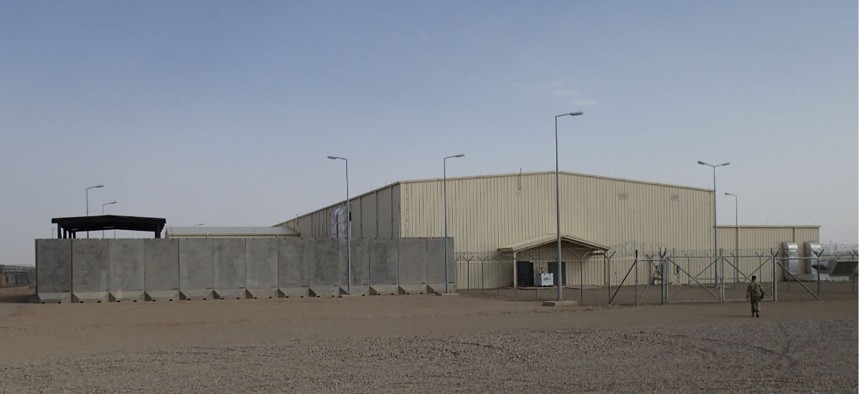Generals in Afghanistan Failed to Cancel Unneeded $36 Million Facility
SIGAR and lawmakers call for generals to be held accountable for “misconduct and mismanagement.”
A $36 million command and control center planned for Camp Leatherneck in Afghanistan as part of the 2011 U.S. troop surge was built even though multiple officials had warned it was unneeded, a watchdog reported Wednesday.
The 64,000-square-foot facility in Helmand Province was constructed to 98 percent completion but never used, prompting calls from an inspector general and lawmakers for discipline of officers guilty of both “misconduct and mismanagement.”
“While a request to Congress for funding the … facility was pending and a year before construction even started, multiple generals on the ground in Afghanistan began requesting cancellation of the facility,” said a release from the Special Inspector General for Afghanistan Reconstruction. “This included the general in charge of the surge in Helmand, who recommended cancellation because existing facilities were more than sufficient.”
But another general said it would not be "prudent" to cancel a project for which funds had already been appropriated by Congress.
SIGAR John Sopko, in a letter to Defense Secretary Ash Carter, said the request to cancel the building was rejected by then-Maj. Gen. Peter M. Vangjel. The IG recommended discipline for him, along with Maj. Gen. James Richardson, “in light of his failure to carry out a fulsome investigation in compliance with” orders from Gen. Joseph F. Dunford Jr. The IG also recommended administrative or disciplinary action for Col. Norman F. Allen “in light of his failure to comply with law, regulation, and his ethical and professional responsibilities.”
More broadly, SIGAR suggested improved financial management training and new stress on the duty of decision makers to protect taxpayers against continuing spending that is no longer needed.
The watchdog said that while most of the offices and individuals SIGAR contacted were cooperative during the probe, “some officials, in their own words, attempted to ‘slow roll’ or otherwise frustrate SIGAR’s investigation,” and the general who overruled the cancellation was not interviewed during the Army’s own review.
The Pentagon did not accept all of SIGAR’s characterizations. “It was determined that then-Maj. Gen. Peter Vangjel's decision to deny then-Maj. Gen. Richard Mills’ May 2010 cancellation request was prudent,” wrote a deputy in February on behalf of then-Defense Secretary Chuck Hagel. “At the time of the decision, Camp Leatherneck was being considered as a potential enduring location for the U.S. military.”
Gen. Vangjel also provided a rebuttal, alleging “significant errors” by investigators.
The report drew an angry response from two senators. Sen. Chuck Grassley, R-Iowa, said, “This is a classic example of Pentagon waste. Spending money for the sake of spending it shows complete disrespect for the taxpayers. Actively impeding a watchdog investigation adds insult to injury. Everybody responsible for this boondoggle ought to be held accountable for it. As the Pentagon presses Congress for more funding, the taxpayers shouldn’t have to dig into their pockets to pay for such irresponsible waste.”
Sen. Claire McCaskill, D-Mo., said, “This is one of the most outrageous, deliberate, and wasteful misuses of taxpayer dollars in Afghanistan we’ve ever seen. When it was clear this building wouldn’t be used, and when three commanders requested its cancellation, the Army not only built it anyway but completely failed to hold any officials accountable after all the facts came to light—so I’ll now be fully expecting answers from the Army.”








